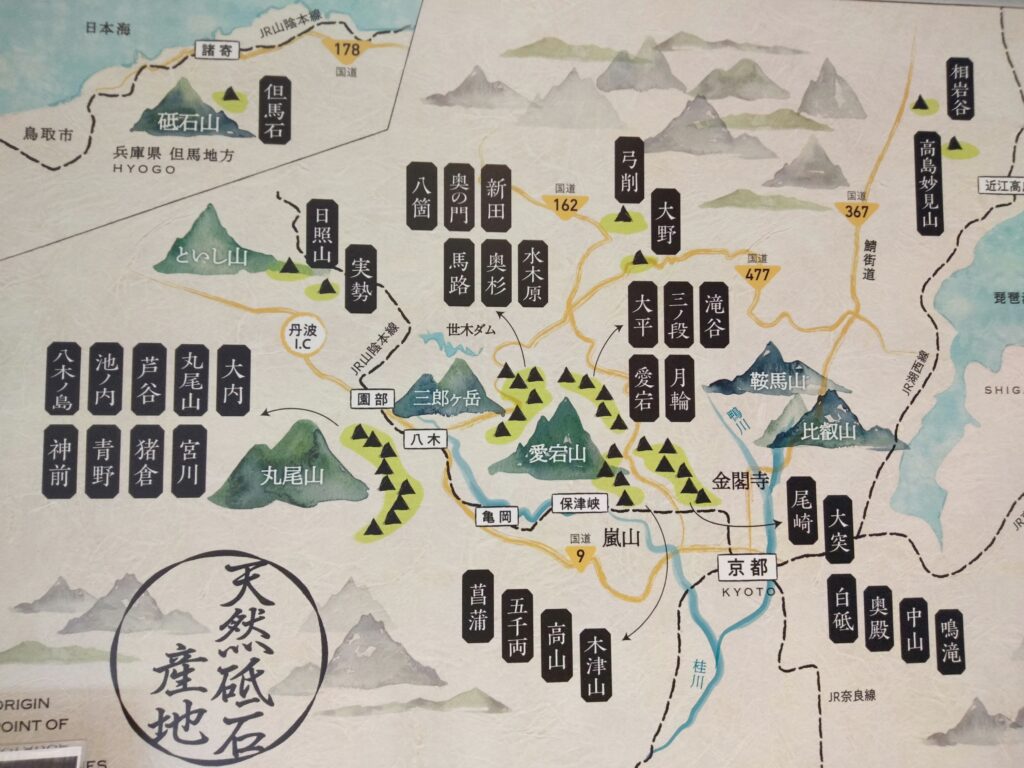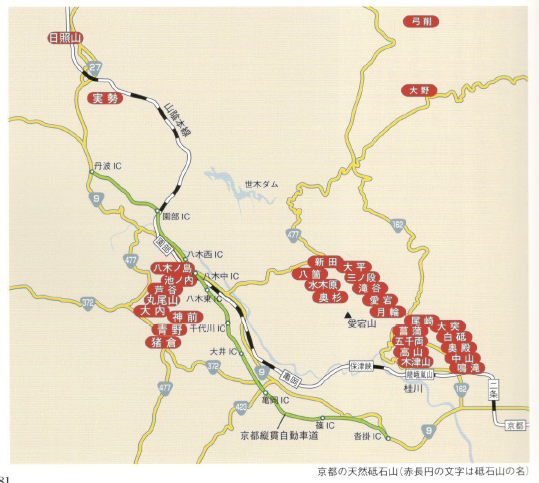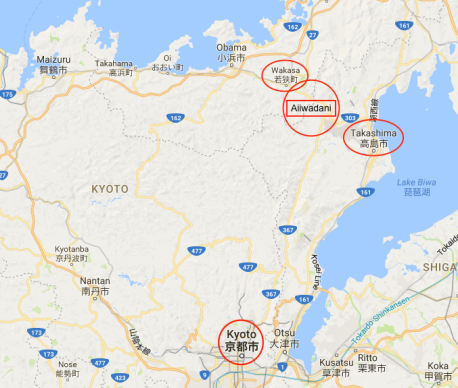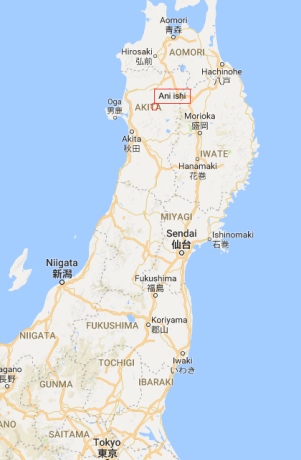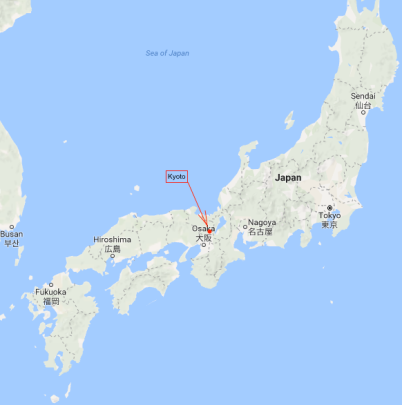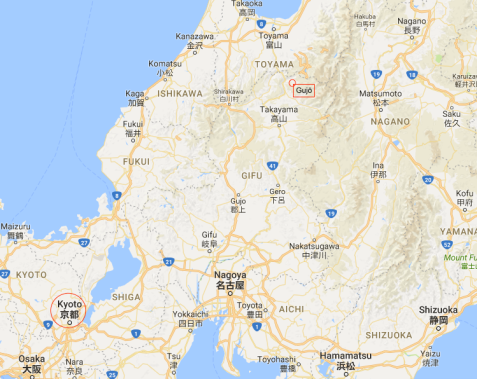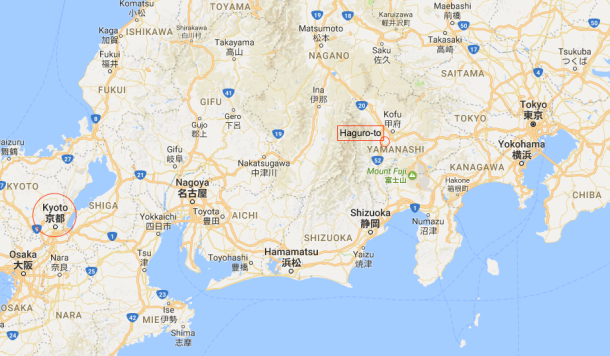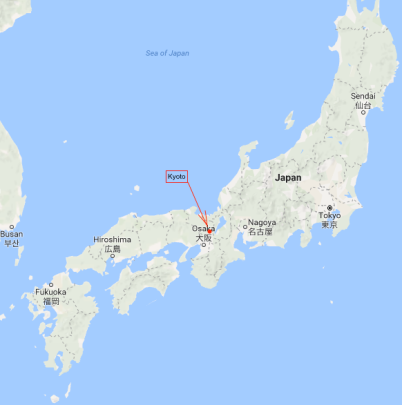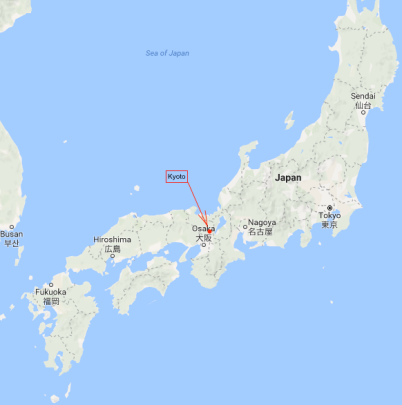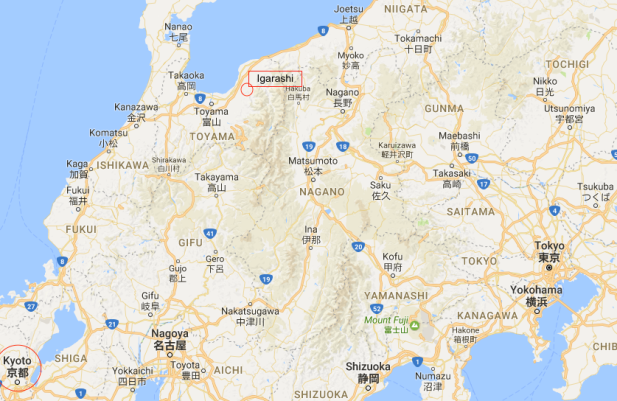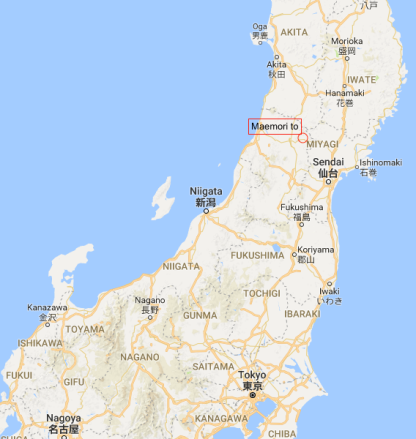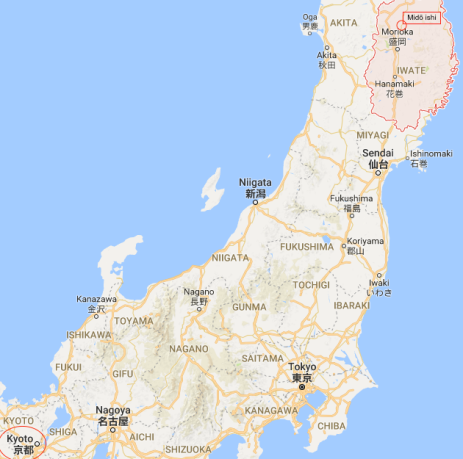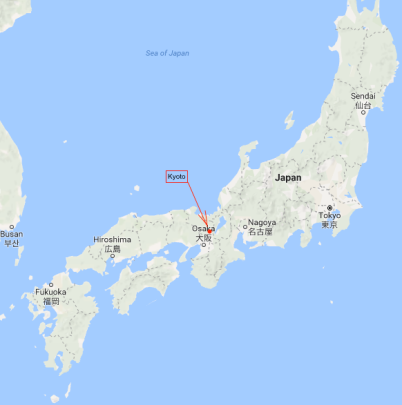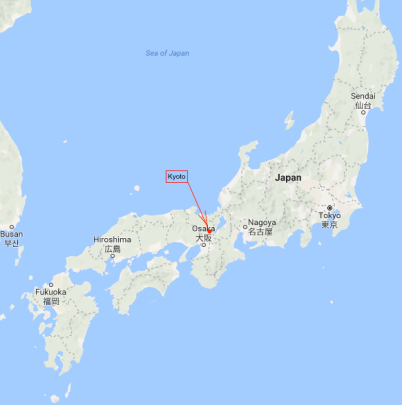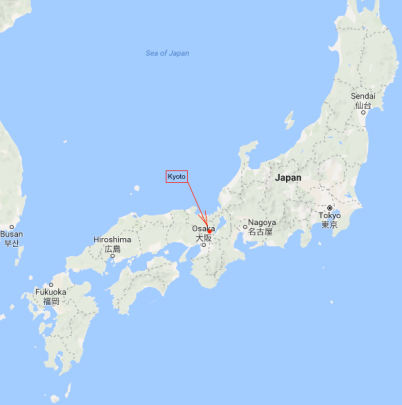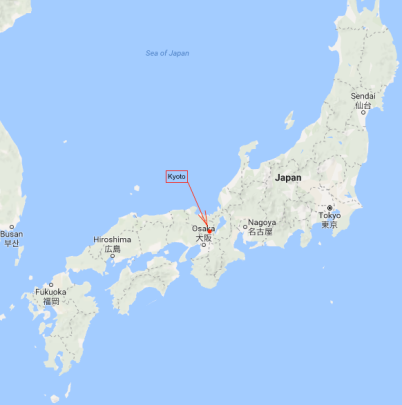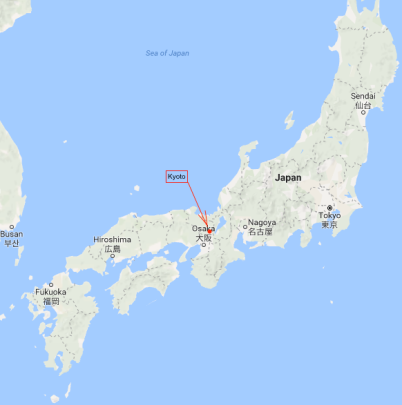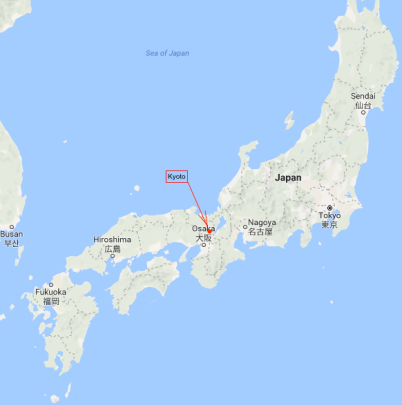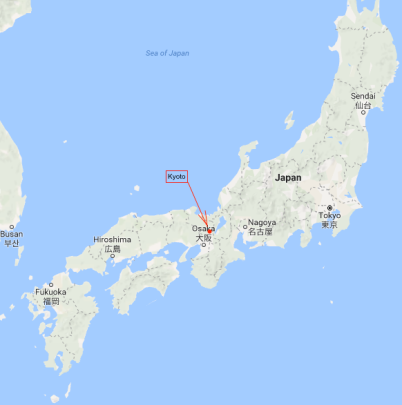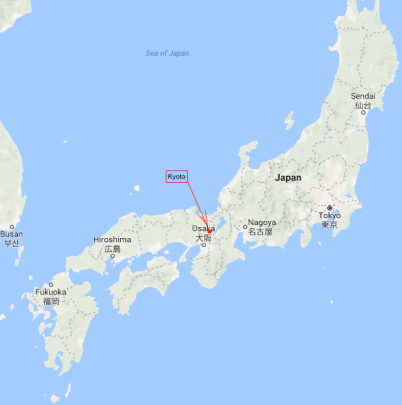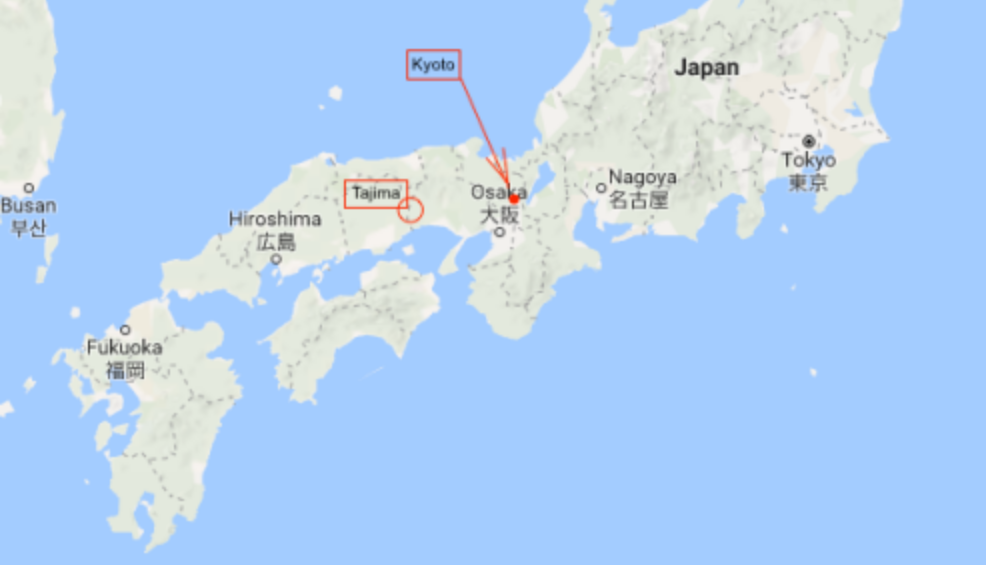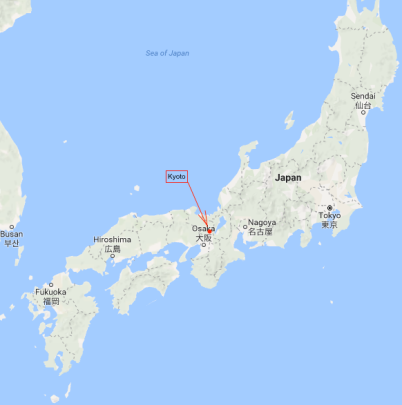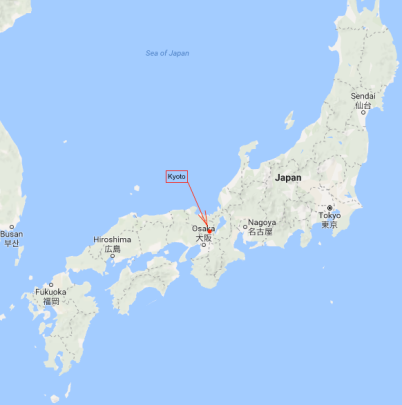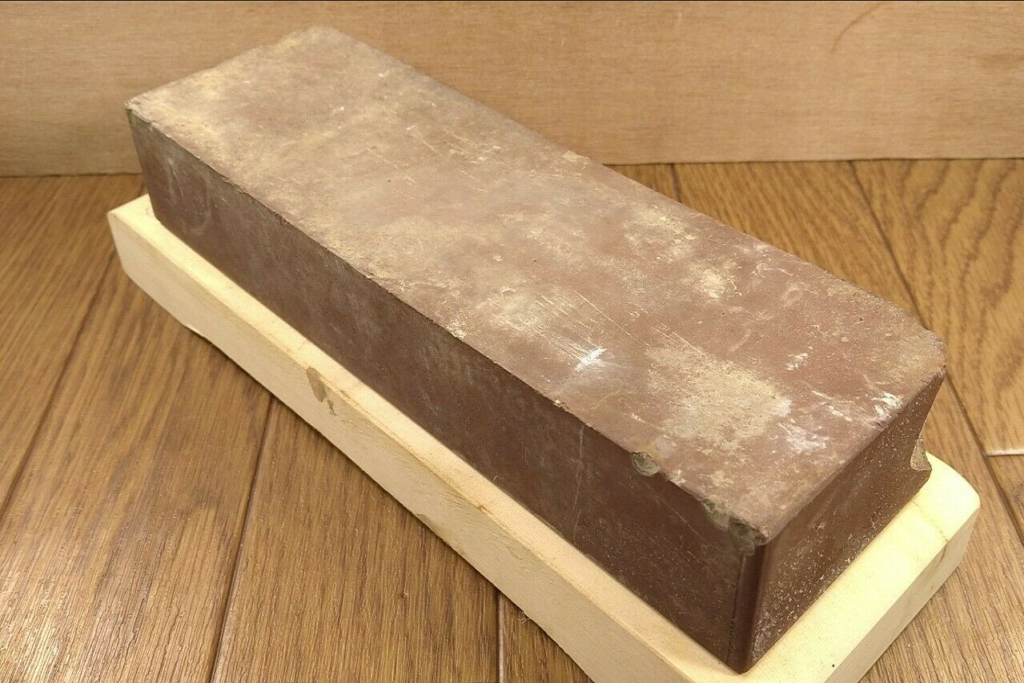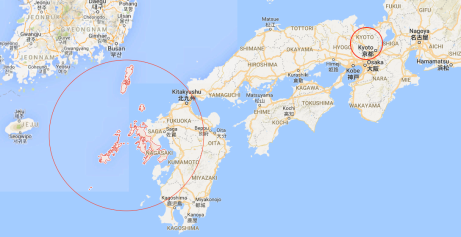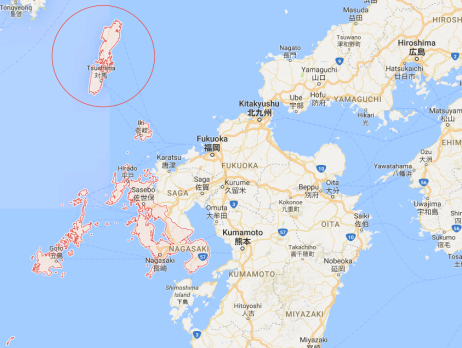Special thanks to https://historyrazors.wordpress.com/ for allowing access to many of the maps on this page.
Eastern and Western Mine Lists
“Eastern mines”, “East side mountain” or “Higashi Mono / Higashi Mon” 東モン
= Positioned east of Mt. Atago/Atagoyama 愛宕山:
- Aiiwatani / Aiwadani (相岩谷産)
- Gosenryou (五千両)
- Kinugasayama (衣笠山)
- Kizuyama (木津山)
- Nakayama (中山)
- Narutaki (Mukoda/Mukaida) (鳴瀧 or 鳴滝)
- Okudo (奥殿)
- Okusugi / Oku sugi (奥杉)
- Ozaki/Osaki (尾崎)
- Ozuku (大突)
- Sannodan / San no dan (三の段)
- Shiroto (白砥)
- Shoubudani (菖蒲谷)
- Takashima (高島)
- Takayama (高山)
- Takitani (滝谷)
- Tukiwa / Tsukiwa (月輪)
- Yazutsu / Yadzutsu (矢筒)
“Western mines”, “West side mountain” or “Nishi Mono / Nishi Mon” 西モン
= Positioned west of Mt. Atago/Atagoyama 愛宕山:
- Aono (青野)
- Ashiya (Ashidani/Ashitani) (芦谷)
- Atagoyama (愛宕山)
- Hakka (八箇 or ハッカ)
- Hideriyama (日照山)
- Ikeno-uchi (池ノ内)
- Inokura (猪倉)
- Izariyama (イザリ山)
- Kakiyama (柿山)
- Maruoyama (丸尾山)
- Mizukihara (水木原)
- Momijiyama (紅葉山)
- Kaedeyama (楓山)
- Kouzaki/Kōzaki (Tanba, 神前)
- Ohira (大平)
- Okunomon (奥ノ門)
- Ogurayama (小倉山)
- Omoteyama (表山)
- Otaniyama (大谷山)
- Otoyama (音羽山)
- Ōuchi/Oh-uchi (大内)
- Shinden (新田)
- Umaji / Umajiyama (馬路山)
- Yaginoshima (八木ノ嶋 or 八木嶋 or 八木の嶋)
- Yuge (弓削)
In the area around Kyoto city, on the northern edge, in the area called “Narutaki,” is a mountain called Atagoyama (Mount Atago). Clustered around this mountain, spreading to the East, are a number of smaller mountains riddled with rock mines and quarries, the Eastern mines or Higashi Mono, for example Nakayama, Shoubudani, Narutaki. West of Atagoyama (Mount Atago) are the Western mines or Nishi Mono, for example Shinden and Ohira.
There are two more quarries found in far North-east of the Kyoto area, Sougandani and Wakasa. These quarries are right by Aiiwatani but technically from a different range, thus not classified the same as Higashi Mono. Sometimes Takashima is incorrectly lumped into this category, but it is classified as Higashi Mono. They perform very similar to all of the Honyama mines above.
Different Japanese Natural Stone (JNATS) Mines
Aiiwatani, Aiwadani, Ai Iwatani, Iwatani, or Iwadani – 相岩谷 / 相岩谷産
Location: Central Japan, Kyoto, Eastern Mine
Stone Type Produced: Shiage Toishi / Awasedo
May be referred to as Aiiwatani, Aiwadani, Ai Iwatani, Iwatani, or Iwadani. The current stamp being used by the mine stockpike inheritor is Aiiwatani (相岩谷産), but previous stones were marked (often on the side of the stone) by his father with Aiwadani (相岩谷). This is part of the reason why the name can change depending on vendor and listing. Regardless of how it is written, the stones all originate from the same mine Higashi Mono (Eastern Mine) north of Kyoto located by Takashima and Wakasa. It sits at the end of the Hon-Kuchi Naori vein of stone which is shared by the majority of other Kyoto mines.
Aiiwatani when compared to other mines tends to produce harder and very fine stones, it can be quite difficult to find softer ones. This is often sought out as a cheaper alternative to the very hard Nakayama stones which are fantastic for razors. A little unique in the Hon-Kuchi Naoi mines is the Suita layer of the Aiiwatani mine was very small comparatively and often mixed with Namito stone. There are very few Aiiwatani Suita stones on the market due to this, and many that are around are actually a mix of Namito and Suita.
The mine is no longer active.
Aizu – 会津砥
Location: North East Japan, Fukushima
Stone Type Produced: Nakatoishi
A Northern Japan mine producing a middle grit whiteish whetstone which goes by the Aizu name and turns a light emerald when wet. It is known to have white spots within the emerald structure which are caused by non-toxic Feldspar inclusions. It can look similar to Ikarashi/Igarashi/Kasabori as it shares the same geological vein of stone, however it is known to be finer, faster, and harder. When comparing it to the other stones, it tends to be a lighter color and more blueish/grayish whereas the Kasabori tends to be darker, more greenish. Aizu whetstones are highly regarded as one of the best nakatoishi available and can also be used as a replacement for Kaisei-do in the traditional sword polishing lineup, though compared to Kaisei it tends to be a bit finer. The Aizu mines were all over the region they were pulled from but are generally broken down into “Western” and “Southern” specimens. The Southern variety tends to be more consistent, more robin’s egg blue, and have more consistent feldspar spots throughout. The stone responds very well to surface conditioning, allowing for the ability to sharpen knives, polish knives, and bevel set razors equally well with the same stone.
Traditionally mined during the summer, in winter the large stones were cut into smaller useable pieces in house. However, one winter, due to severe cold, all windows were closed, and all the workers were exposed to high levels of stone dust. This made everyone get lung disease with high death rates around 1950. No “Aizu” have been produced after 1950’s and whatever is left is stock from before then.
The mine is no longer active.

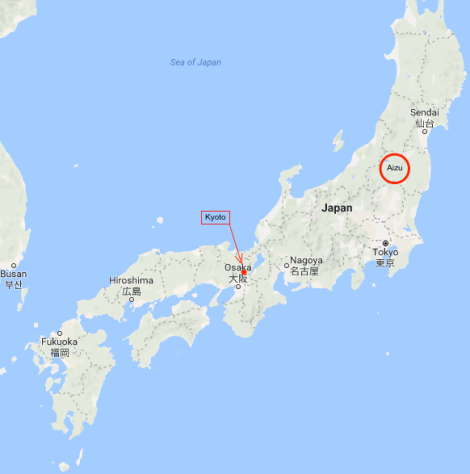
Amakusa – 天草
Location: North Japan
Stone Type Produced: Aratoishi and Nakatoishi
A Southwest Japan by the straits of Hayasakiseto on the island Shimoshima, close to the town of Amakusa in the prefecture of Kumamoto. There are two types: red (coarser) and white (finer). The red is a type of coarse grit stone while the white is a middle grit stone. Both are very affordable stones which are widely available within and outside of Japan. Often a natural starting point due to their price, the stones suffer from often containing a variable grit within the stone, potentially being crumbly, and having very porous surfaces. Amakusa stones can benefit from being soaked, which can help their performance.
Sometimes vendors will mis-label white Amakusa as Binsui, but they perform fairly differently. One of the best ways to be able to identify Amakusa versus Binsui is by the grey dots commonly present in the surface of the Amakusa stone.
This mine is active.


Ani Ishi – 阿仁石
A Northern mine producing rough quartz rock and crushed stone.
This mine is no longer active.
Aono – 青野
An eastern mine in Kyoto.
Ashiya (Ashidani/Ashitani) – 芦谷
An eastern mine in Kyoto.
Asahiyama – 朝日山
Atagoyama – 愛宕山
Location: Central Japan, Kyoto, Western Mine
Stone Type Produced: Shiage Toishi / Awasedo
Not to be confused by the mountain name itself, this is a mine at Atago Mountain, it’s known to produce large clean whetstones from the Chu-ishi Naori vein – different from most of the other Kyoto mines. These whetstones tend to be softer and less fine than those from Hon-Kuchi Naori vein stones. They are generally very consistent and of good size. These stones are described as having the ‘ball’ form, which means they are all one layer rather than multiple layers.
This mine is no longer active.
Aoto – 青砥 or Kai-Aoto – 改青砥
Location: Central Japan, Kyoto
Stone Type Produced: Nakatoishi
Represents two sites, traditional Aoto comes from the ancient mining site Ukabana Aoto. The Kai-Aoto is a newer second site. Aoto stones are a form of altered slatestone which is a middle grit stone which are often softer and muddy. The stones were incredibly popular with traditional carpenters and woodworkers in Japan for keeping chisels sharpened. Aotos tend to be fast and easy to work with while remaining affordable. The stones will dish fast and can be scratchy, as such they are not typically ideal for knife polishing. You can learn more about using Aoto stones here.
This mine is no longer active.
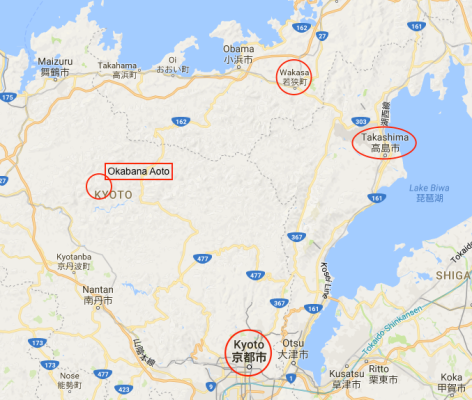
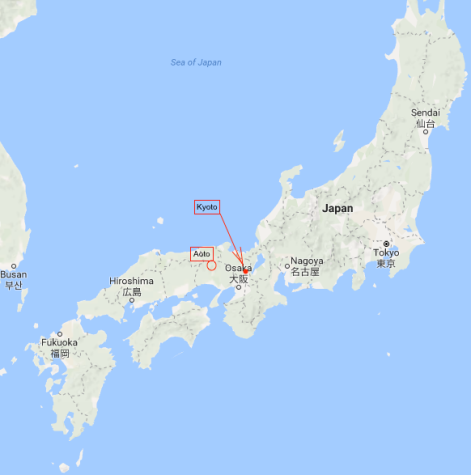
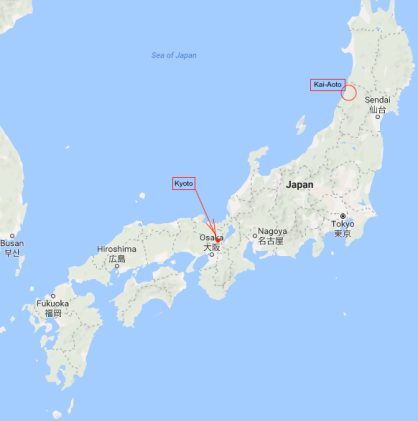
Ara Uchi – 荒内砥 or Arauchi Kai-Aoto – 改青砥
Location: Central Japan, Kyoto
Stone Type Produced: Nakatoishi
Produces similar stones to the standard Aoto and Aoto-Kai, and are typically sold under the same Aoto moniker. Aoto stones are a form of altered slatestone which is a middle grit stone which are often softer and muddy. The stones were incredibly popular with traditional carpenters and woodworkers in Japan for keeping chisels sharpened. Aotos tend to be fast and easy to work with while remaining affordable. The stones will dish fast and can be scratchy, as such they are not typically ideal for knife polishing. You can learn more about using Aoto stones here.
This mine is no longer active.
Binsui (to) – 備水(砥)
Location: South West Japan, Kyushu
Stone Type Produced: Nakatoishi
Mined in the same area Amakusa is, on the island of Kyushu in the Kumamoto prefecture. Binsui is one of the traditional swords polishing stones of Japan early in the progression and a very versatile middle grit stone to work with. The stone is usually white with a mix of other colors in it, and better-quality ones will have less holes throughout their composition and be finer in grit.
Often, Amakusa Shiro is sold incorrectly as Binsui for a higher price. The easiest way to tell them apart is that Amakusa Shiro is more likely to have holes and significantly more likely to have grey spots throughout its makeup. Very good quality Binsui can be harder to find and come at about a 100% mark up, but since the stone is already cheap, the high-quality items end up being around $100-$120 as of 2022.
This mine is active.

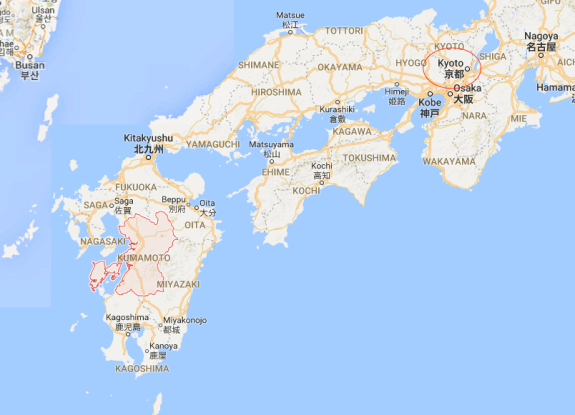
Bushu or Bushuto
Mined out of the Saitama prefecture, it was a low volume whetstone produced by a miner during the off growing seasons. It performs similar to a Tsushima Nagura but tends to be a bit softer and finer.
Chu Nagura – 中名倉
A nagura stone from the same area as the Mikawa nagura, it has wide range of performance and is one of the stones traditionally used in sword polishing (between Kaisei and Koma). Chu is from its own mine on Kada mountain beside the mountain Mikawa comes from. Generally, it performs similar to Mikawa Atsu or Botan.
Gasshoji Temple- 合掌寺砥
Location: Central Japan, Kyoto
Stone Type Produced: Nakatoishi
Quality Compared to Similar Types of Stones: N/A
A mine far east of Kyoto, supposed to produce a dense and tough yellow stone. There is very little information on this mine.
This mine is no longer active.
Ginsei
Mined from Tozawa in Gunma Prefecture of Kanto, this is a middle girt stone similar to other Numata style stones.
Gosenryou – 五千両
A north western mine in Kyoto.
Gujō | Gujo | Gujo Nagura – 郡上砥 or 郡上名倉 or 小鳥
A northeastern mine located in Gifu prefecture, Yoshiki district, Kamioka city, Inishi producing a soft finishing stone sometimes mistaken for a nagura Fineness of these stones ranged but exceptional examples were used for mirror polishing and finer than Koma Nagura. The mine was closed in 1940’s, so it is rarely seen in Japan anymore. Gujo stones are often called Gujo Nagura and are said to have been mined by a farmer in Gifu prefecture as a side business before it started to snow in winter.
I was originally under the impression that sometimes these had circular red or blue stamp is on the stone which contains 鶉 (Meaning うずら or Quail). This is true, but it is actually a store stamp that sold a limit amount of them at one point – and other stones have this marking as well.
This stone is also sometimes called Kotori or Kotori Toishi written as 小鳥. These kanji translate to “small bird” and sometimes you will see it translated as such in English.
These should not be confused with Odori stones which come from the Gifu area but a different specific location within it. Odori are not as fine and perform more similarly to the Mikawa Nagura.
These stones are very thirsty, the thirstiest I have ever encountered. If left in water, the whole block will absorb water rather than just the top layer. The stone must be soaked for a little bit before use or else it is a poor experience. Similarly, the stone is also the lightest/least dense I have ever used. They can be very surprising how lightweight the bricks or pieces are.
Visually, Gujo Nagura always have “spots” within their composition. Sometimes these spots are dark and can take the form of a “cow spot” look. Many times the spots are white, and only reveal themselves after the stone has been wet and then begins to dry. The spots will dry at a different rate than the rest of the stone – creating the look. It is very common for these stones to be mislabeled as Mikawa by vendors who do not know any better. These spots are almost always actually Gujo nagura, and if it is a very thirsty lightweight stone compared to other Mikawa samples – it is likely a Gujo stone instead. These are my favorite stones of all JNATs.
Gunma – 群馬
A few mines are called Gunma mines which produce various types of mid-grit stone such as Kouzke, Numata, and Komaki.
Haguro – 羽黒砥
This was a whetstone mine located in Yamanashi prefecture producing two types of mid-grit whetstones a white and red variety. The white is known to be a bit finer than the red.
Hakka – 八箇 or ハッカ
This was a whetstone mine that produced many good stones. Generally speaking, they are usually softer and coarser. Located on the west side of Mt. Atago.
Hideriyama – 日照山
A whetstone mine known for producing good quality finishing stones that are generally expected to be softer and coarser than stones than other mines.
Hikamado / Hikamato – 飛駒砥
A very interesting whetstone from Sano, Tochigi which acts much like the stones from the Kyoto area. Many of them perform like Awasedo and they tend to have a unique blotchy look as well as some very unique red coloring.
Ikarashi To(ishi), Igarashi – 五十嵐
A mine in Niigata, Sanjo, producing andesite rock of a medium-course grit. This is sometimes called Kasabori if it is sourced from the older exhausted mine within the same area. The Kasabori Igarashi is said to be finer, but the difference is minor and varies from stone to stone.
Ikeno-uchi – 池ノ内
A western mine in Kyoto.
Inokura – 猪倉
A western mine in Kyoto.
Iyoto or Iyo-to – 伊予砥
A south western mine in the Ehime prefecture. It produces a medium grit mica andesite rock. It is the oldest whetstone mine in Japan and is still mined.
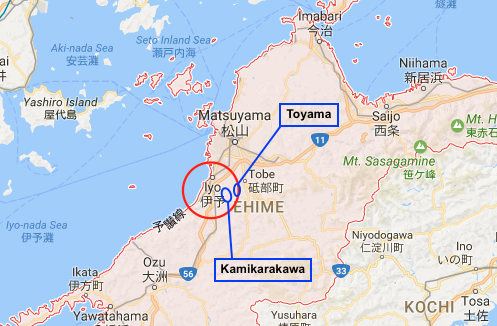
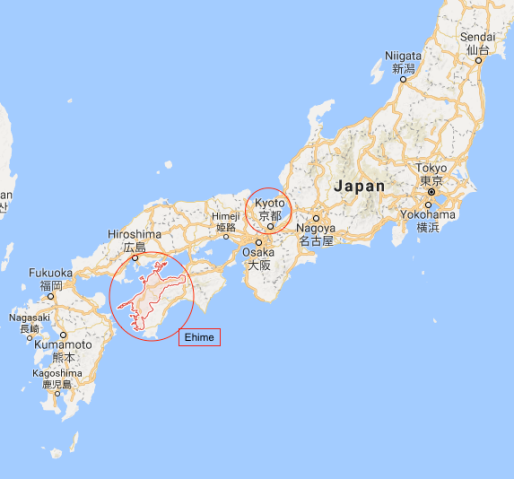
Izariyama – イザリ山
Located to the northwest of Kyoto.
Jōkyōji To – 浄教寺砥
A north eastern mine producing tough stone which was stratified with sandy shale.
Kaedeyama (楓山)
A western whetstone mine in Kyoto, known for its softer courser Awasedo stones. Many of their stones are comparable to a Awasedo version of the Tanba Aoto.
Kaisei – 開成
A medium (nakatoishi) whetstone which comes from this query in the northern Japan of the Yamagata prefecture. It is a good quality whetstone used for traditional sword sharpening.
Kakiyama (柿山)
A western whetstone mine known for harder stones.
Kinugasayama (衣笠山)
Located by Nakayama, Ozuku, and Shobudani area and mined primarily by Hatanaka. Known for semi-soft Suita stones.
Kizuyama, Kidzuyama, or Kitsuyama – 木津山
One of the eastern whetstone mines in Kyoto.
Komaki
A coarser stone from the Gunma area which is known for being fast cutting and slow wearing.
Kouzaki – 神前
This was a mine in the Kameoka area where Aoto were quarried; the stones from this location were generally harder and finer than stones from the other mines. This mine was situated on the west side of Kyoto and the most sought after Aoto.
Kozuke
One of the many nakatoishi whetstones to come out of the Gunma prefecture. It performs similar to Iyoto Shiro stones but a little softer.
Kurama – 鞍馬
A shale whetstone produced from Mount Kurama, it shares similar qualities to the Tsushima whetstone but tends to be less likely to break, finer in grit quality and faster at cutting metal.
Maemori To – 前森砥
A northern mine producing dense green medium grit stone.
Manago – 真名子
A north eastern mine producing dense blue slate and sandstone.
Maruoyama – 丸尾山
A western mine in the Oouchi district; known for stones quarried from the Hon-Kuchi and Ai-ish Naori. They have 3 quarries at Maruozan (丸尾山 – Mt. Maruo) mountain which are located in the south east of Japan. This is one of the still active mines in Japan.
Matsuura or Matsuurato
An Aratoishi from the Kyushu Island of Japan. The mine has been closed since the 1970s.
Mesuki
An extremely coarse whetstone from Kameoka Inokura Kyoto. Mesuki-to was originally used by blacksmiths for blade making immediately after forging and to prepare for further Aratoishi steps.
Midō Ishi – 御堂石
Produced medium grit whetstones in the Iwate prefecture of northern Japan.
Mizukihara – 水木原
A western Kyoto mine, located in the same mountain as Ohira.
Mikawa Nagura Mine – 純三河白
Located in the Aichi prefecture, these are the best known Nagura and were traditionally used for sword polishing and later for honing razors. There are technically more than one “Mikawa” mine, but when the term is used, it is referring to the pit operated by Iwasaki, Sakamoto, and Aichi which produced the stamped “Mikawa Nagura”. There were other smaller mines of lesser-known qualities from Mikawa/Aichi called Kanda, Miwa, and Kawai. Closed in 1976.
Momijiyama – 紅葉山
Located in the western area of Kyoto by the Kozaki mine. The mine is no longer active.
Monzen or Monzento
Mined out of Miyagawa in West Kyoto, these perform very similar to soft and coarse Aotos. The mine was shut down in 1975.
Nakayama – 中山
This is arguably the most famous eastern whetstone mine. It was located at Atago Mountain.
Narutaki – 鳴瀧 or 鳴滝
An eastern mine. Sometimes used to refer to where other eastern mines are located around.
Natsuya or Ebisuto – 夏屋 / 夏屋砥 or 恵比寿砥 / 戎砥
A striped brownish orange Nakatoishi which comes from the Kawai village area of the Iwate prefecture in North Eastern Japan.
I have found some information regarding a stone from the same region referred to as Ebisu, Ebisu-to, or Ebisuto (恵比寿砥 / 戎砥). This seems to most often be sold as just a “Natsuya” but at once there was a delineation. From the limited information I can find Ebisuto is never stripped and more mottled white/orange flat colored. I am not sure if all non-striped Natsuya are this sub-variant Ebisuto.
Numata – 沼田
Located within Gunma and closed in 1965. Produced the finest form of Gunma stones often called Numata-do or Numato-do.
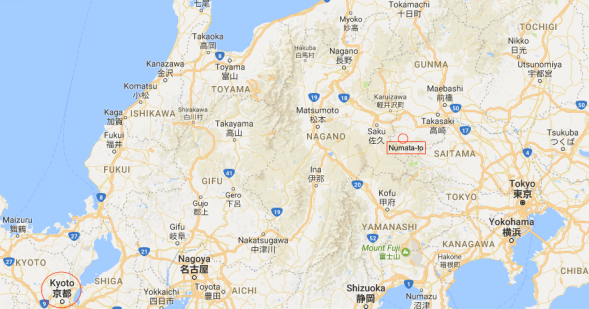
Odori – おどり
A small scale mine near Odori river in Gifu produced Odori Nagura similar to Mikawa Nagura in the lower level range (~Botan). The nagura is named after the mine nearby. It was mined by Yamamoto-San who is now retired. These are very difficult to distinguish from Mikawa Aichi stock.
Ogurayama – 小倉山
A western whetstone mind in Kyoto, known for their semi-soft fine stones. Located between Kameoka and Arashiyama.
Ohira – 大平
Sometimes written as Oohira. Famous for its Uchigumori, it also is known for outstanding Suita. This is one of the still active mines in Japan.
Oizumi
A stone similar to the soft Aoto stones which comes from Ibaragi Prefecture in East Japan. Sometimes it is referred to as the Kanto Aoto.
Okudo – 奥殿
This is a semi-active eastern (Higashi Mono) Kyoto whetstone mine that is best known for the most highly coveted Suita in Japan.
Okunomon – 奥ノ門
This western Kyoto mine was located next to Ohira.
Okusugi / Oku Sugi – 奥杉
An eastern mine in Kyoto.
Omura or Oomura – 大村
A whetstone mine on Kyushu, this location was known for producing sandstone Aratoishi. This is one of the still active mines in Japan.
Omoteyama – 表山
A smaller mine in Kyoto located at Umegahata next to Ohira. Known for harder Suita.
Otaniyama – 大谷山
This whetstone mine typically produces a very dense, fine, almost dark black Tomae suitable for razors. Not to be confused with Tsushima, this stone will have a pattern and typically some natural holes within its structure.
Otoyama – 音羽山
This whetstone mine is known for producing Suita. Sometimes written as Ondoyama.
Ōuchi – 大内
A Western Mine known for softer coarser bench stones of good quality.
Ozuku – 大突
This was one of the famous eastern mines in Kyoto. It is known for very hard and fine stones. The mine has been closed longer than most, since 1920-1930s.
Ozaki – 尾崎
A whetstone mine in Kyoto.
Saeki
A coarse Nakatoishi from Saeki (Saiki) in Kyushu. It is a sandstone similar to Omura. The black/dark grey variant is harder with the tan variant being softer.
Sano / Sannodan / San no dan (三の段)
An eastern mine in Kyoto.
Sasaguchi or Sasaguchido
An Aratoishi mined from Sasamura, Nagasaki. It is considered the best of the coarse Aratoishi. The mine has been exhausted with Omura Chameto as a viable but lesser replacement.
Shinden – 新田
A Western Kyoto mine known for producing highly prized Suita.
Shiroto – 城所
This whetstone mine is connected to Ozuku.
Shoubudani – 菖蒲谷
An eastern mine located just around Kyoto.
Tajima – 但馬
This whetstone mine is to the west of Kyoto. They are a fine grit Nakatoishi and perform similar to Tsushima Nagura but are usually harder. This mine suffered a major rockfall accident in 1947 and was closed shortly thereafter.
Takao – 高雄
This whetstone mine in Kyoto was well known for producing Awasedo.
Takashima – 高島
This whetstone mine is located northeast of Kyoto. Stones from this location come from the Hon-Kuchi Naori, and they are generally very consistent and fine but a bit soft.
Takayama – 高山
A mine located at Kyoto.
Takitani – 滝谷
A mine located at Kyoto.
Tsushima – 対馬
Quarried on Tsushima island, west of Nagasaki. There are two mines located in the same general area, one within the mountains on land and one under the water just off the coast. These stones are known to be hard and fine, often used as nagura rather than a whetstone itself. When used as a nagura, the slurry tends to be somewhere between Mejiro and Koma nagura. It is difficult to distinguish the ocean variety, often called Ocean Blue, from the mountain variety, often called Mountain Tsushima besides the coloring. Mountain Tsushima Nagura are brown in color. The mine is no longer active.
Tukiwa / Tsukiwa – 月輪
A mine located at Kyoto.
Ueno (Kozuke/Kouzuke)
Ueno is a mistranslation. From Gunma, it is a medium-fine whetstone similar to Tajima-to.
Umaji/Umajiyama – 馬路山
This Nishi-mono whetstone mine was located on the west side of Mt. Atago along with Oohira and Shinden. Generally, but not always – this location was known to produce softer stones from shallow layers.
Umegahata – 梅ヶ畑
A mine located at Kyoto.
Unzen – 雲仙
Located near to the volcano Unzen-dake in the prefecture of Nagasaki, it produces a coarse mottled white whetstone. This mine is still active.
Wakasa – 若狭
A whetstone mine which performs similar to the Honyama stones from Kyoto but instead comes from Miyama Mountain. They range in performance and are generally considered an inferior stone, though good examples of course exist.
Yamashiro – 山城
An area and not an individual mine, an old name for Kyoto. It may be used as a broad name for any of the Kyoto mines.
Yaginoshima – 八木嶋 or 八木ノ嶋 or 八木ノ島
This whetstone mine is located east of Ohira and known for producing good Suita. This is in the general are Tanba Aotos are from.
Yuge – 弓削
This is a whetstone mine in northern Kyoto. This source is known fo softer high- quality stones from Tomae strata; 弓削 戸前 = Yuge Tomae.
